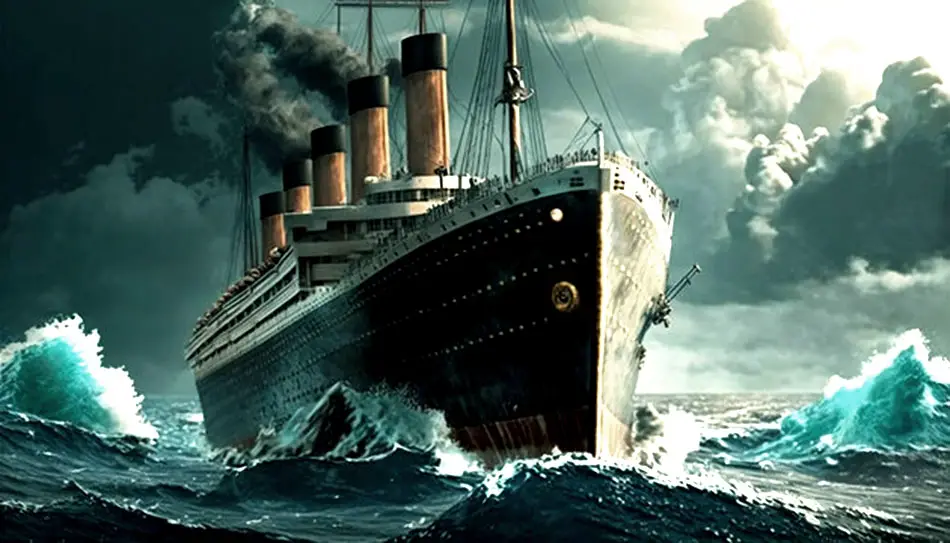The sinking of the RMS Titanic remains one of the most iconic and tragic events in maritime history. The luxurious ocean liner, famously dubbed the "unsinkable ship," met its untimely fate on its maiden voyage in 1912. This article explores the captivating story of the Titanic, from its construction to its tragic demise, and its enduring legacy that continues to captivate the world even after more than a century.
Building the "Unsinkable" Ship
The Titanic was conceived as a remarkable feat of engineering and opulence. The White Star Line commissioned the construction of the Titanic and its sister ship, the RMS Olympic, with the aim of creating the most luxurious and advanced ocean liners of their time. The ship was built in Belfast, Ireland, at the Harland and Wolff shipyard, under the supervision of renowned naval architect Thomas Andrews.
At the time of its launch, the Titanic was the largest ship ever built, measuring approximately 882 feet long and weighing over 46,000 tons. It boasted impressive amenities, including grand staircases, luxurious cabins, a swimming pool, a gymnasium, and even a squash court. The Titanic was designed to provide a lavish and comfortable voyage for its wealthy passengers.

The Ill-Fated Maiden Voyage
On April 10, 1912, the Titanic embarked on its maiden voyage from Southampton, England, bound for New York City. The ship carried over 2,200 passengers and crew members, including some of the wealthiest and most prominent individuals of the time. However, tragedy struck only four days into the voyage.
On the night of April 14, 1912, the Titanic struck an iceberg in the frigid waters of the North Atlantic. Despite the ship being equipped with watertight compartments and advanced safety measures, the collision proved catastrophic. The iceberg tore a series of holes along the starboard side of the ship, causing it to flood rapidly.
The Unsinkable Ship Meets its Fate
The sinking of the Titanic was a devastating event that resulted in the loss of over 1,500 lives. The lack of sufficient lifeboats aboard the ship exacerbated the tragedy, leaving many passengers and crew members without a means of escape. The subsequent rescue efforts by nearby vessels, such as the RMS Carpathia, managed to save only a fraction of those aboard the ill-fated ship.

The Aftermath and Legacy
The sinking of the Titanic shocked the world and sparked widespread outrage, leading to significant reforms in maritime safety regulations. The disaster exposed the flaws in ship design, emergency procedures, and the inadequate number of lifeboats required to accommodate all passengers and crew members.
The story of the Titanic has captured the imagination of people across generations. Numerous books, documentaries, and films, including James Cameron's critically acclaimed 1997 movie "Titanic" have retold the tale, focusing on the personal stories of the passengers and the indomitable spirit displayed during the tragedy.
Today, the Titanic's legacy lives on through various exhibitions and museums dedicated to preserving its history. Artefacts recovered from the wreckage continue to shed light on the lives lost and the events that unfolded on that fateful night.
The sinking of the Titanic remains a haunting reminder of the fragility of human endeavors in the face of nature's immense power. The tragedy highlighted the importance of safety measures, emergency preparedness, and the need to learn from past mistakes. The story of the Titanic serves as a poignant reminder of the human cost and the enduring fascination with this ill-fated ship that will forever be etched in history.
The Titanic Movie
The Titanic movie, directed by James Cameron, was released in 1997 and quickly became a cultural phenomenon. It is a historical romance and disaster film that tells the story of the ill-fated RMS Titanic, which sank in the North Atlantic Ocean on its maiden voyage in 1912.
The movie features a fictional love story between Rose DeWitt Bukater, played by Kate Winslet, a young upper-class woman, and Jack Dawson, portrayed by Leonardo DiCaprio, a working-class artist. Their paths cross aboard the Titanic, and they embark on a passionate but doomed romance.
Cameron masterfully weaves the fictional narrative of Rose and Jack with the real-life events of the Titanic's tragic sinking. The film showcases the opulence and grandeur of the ship, while also exploring the stark contrast between the luxurious accommodations of the upper class and the cramped living conditions of the lower-class passengers.
As the story unfolds, the Titanic strikes an iceberg, leading to a race against time to save as many lives as possible. The movie portrays the chaos, panic, and heroism that characterized the ship's final moments. The sinking of the Titanic remains one of the most devastating maritime disasters in history, claiming the lives of over 1,500 people.
In addition to its captivating storytelling, Titanic received critical acclaim for its stunning visuals, realistic depiction of the ship's sinking, and its exceptional performances. The film went on to become a massive commercial success, breaking box office records and winning numerous awards, including 11 Academy Awards, including Best Picture and Best Director.
The Titanic movie's enduring popularity can be attributed to its ability to merge historical events with a compelling love story, capturing the hearts of audiences worldwide. Even after more than two decades since its release, the film continues to resonate with viewers, reminding us of the tragedy, the human spirit, and the enduring power of love.

